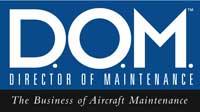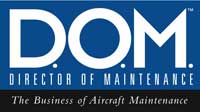
Tricks of the Tradeshow - Six Tips for Technical Professionals Attending Trade Shows

You’re still on the shop floor at 4 p.m. on a Friday when your boss sends you an email stating, “We need you to attend the Jets-R-Us Show in Savannah in two weeks. Buy your airline ticket and talk with Mary in marketing to get all the details.”
For some of you, news that you’ll be attending a trade show is exciting and you look forward to the opportunity to get out of the “office.” For others, your boss just ruined your weekend.
Whether you’re a social butterfly or an introvert, the reason your company wants you at these shows is that you are what they sell and deliver to your customers. Remember, your company isn’t selling widgets — it’s selling service and expertise. Trade shows are a perfect opportunity to showcase your company’s experience and capabilities to a large audience, giving prospects and customers direct access to the people performing the work — you.
Now that you know why you’re being asked to attend the show, there are several things you can do to prepare for the show and ensure you are meeting your company’s needs.
1. Know Your Audience
This may seem like a simple task, but it’s important you know who your audience is to be better prepared for the questions you’ll get at a show. Can you expect to see more customers, prospects or vendors, or a mix of all of these? If you know you’ll see existing customers, find out how (or if) you can gain access to customer information at the show so you can speak intelligently to past service or upcoming service events. If you’ll be meeting prospects at the show, find out if they are likely to be other industry professionals or end users with no technical aviation knowledge. The type of prospect you encounter will drive the level and kind of detail you go into regarding your products and services, as well as the terminology you use.
2. Know Your Goals
There are typically two goals of any convention: new sales and/or service delivery. Both of these goals are important but your company might want particular emphasis on one or the other. Some companies even have metrics they want to achieve at the show. If so, know what the metrics are so you know where to spend your time and energy.
3. Know Your Message
A good marketing department will prepare you with the company’s message for the show. For instance, you may have a press release coming out during the show. Be sure you know what the news release is about so you can incorporate it into your conversations. It’s also a good idea to know the key benefits of your products and services to use as talking points in your interactions with customers, prospects and vendors.
4. The Difference between Selling and Listening
This is probably the single most important tip for anyone representing their company at a trade show. When a customer or prospect comes into your booth, greet them with a smile, get their name (and remember it) and offer them a seat … then shut up and listen. They came to your booth with a purpose and questions. Let them do the talking until you understand what it is they’re looking for fully. In fact, ask more questions if it will help narrow down your answer. No one wants to hear you ramble on when they have specific reason for being there, so ask questions until you can give a clear and concise response. If it’s something you can’t answer, hold off on the questions until you get someone who can. In that case, introduce your coworker who can answer their questions and remain engaged in the conversation. By staying in the conversation, you’ll likely learn something you didn’t already know. If you need to leave the conversation, however, excuse yourself politely, depart with a hearty handshake and say “nice to meet you.” What you want to avoid is dumping your visitor on someone else so you can get out of the interaction. People notice, so be sure to employ good manners and treat any visitor as you would treat a friend coming to visit you at your house.
5. Have a Plan for Handling Difficult Situations
There is a plethora of difficult or uncomfortable situations that could occur at a convention or trade show, from upset customers, to the media, to someone asking you questions you can’t answer. Have a mental plan in place to deal with these situations before they occur. For instance, it’s a good idea to have one or two salespeople as your “wingmen” during the show if a prospect hits you with questions you can’t answer. (Don’t be surprised if, alternatively, you are the salesperson’s “wingman” for technical questions.) If an upset customer approaches you during the show, treat them just as you would any other visitor by greeting them with a smile, exchanging names and offering them a seat. Doing so will (hopefully) lighten the mood a little and give you some time to figure out the best person to handle their issue. Again, use good manners if you need to excuse yourself from the conversation after you’ve introduced them to the right person to address their needs.
6. Relax and Make Friends
Above all, relax and have fun. You will make a better impression on customers, prospects and vendors if you are truly relaxed and having a good time. Trade shows are also an excellent way for coworkers to get to know each other better, building camaraderie and stronger working relationships that will last for a long time.
In the end, try not to think of your tradeshow duty as being a salesman for a day. Rather, think of tradeshows as a big ol’ cocktail party where your job is to network, make friends and get as many people as possible to like you and your company. So relax, have fun and be genuinely proud of your company and the products and services you offer. If you can do that, you will make your marketing and sales teams (as well as your company executives) very happy.
 Kandi M. Spangler is an aviation industry veteran with close to 20 years of experience. Ms. Spangler began flying in 1993 and earned a Bachelor’s degree from Embry-Riddle Aeronautical University. She has worked for Netjets, Inc. and The Air Group – a Part 135 charter and management company. Prior to starting her own marketing firm in 2011, Ms. Spangler served as the Vice President, Marketing for Jet Support Services, Inc. (JSSI).
Kandi M. Spangler is an aviation industry veteran with close to 20 years of experience. Ms. Spangler began flying in 1993 and earned a Bachelor’s degree from Embry-Riddle Aeronautical University. She has worked for Netjets, Inc. and The Air Group – a Part 135 charter and management company. Prior to starting her own marketing firm in 2011, Ms. Spangler served as the Vice President, Marketing for Jet Support Services, Inc. (JSSI).
During her career, Ms. Spangler has been an active participant with numerous aviation organizations and a vocal advocate for the industry. She has served as President of the Midwest Schedulers & Dispatchers Group, held Board positions with the Chicago Area Business Aviation Association (CABAA), and is a longtime member of the Aircraft Owners and Pilots Association (AOPA), the Experimental Aircraft Association (EAA), and the International Aerobatic Club (IAC). She currently sits on the Board for Eagle and Associates Financial Services Corporation and serves on the Access Committee for the National Business Aviation Association (NBAA).
